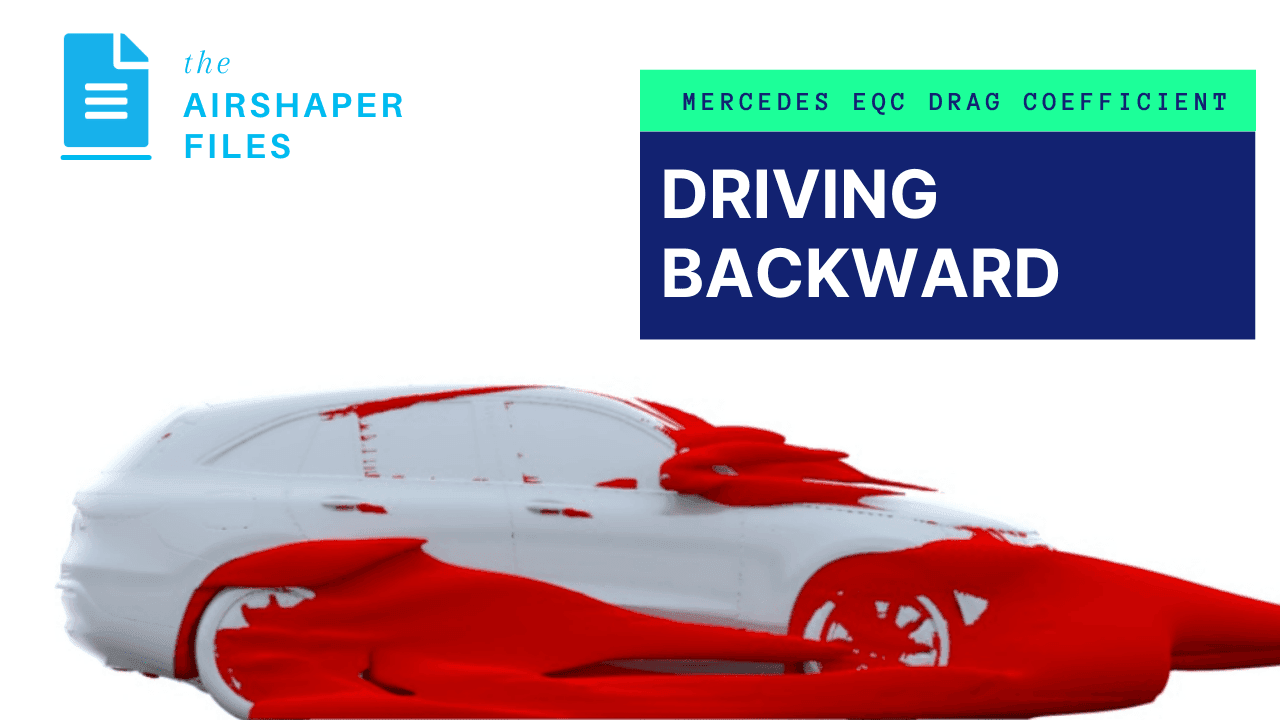

Wouter Remmerie
16/02/2021Ever wondered how the drag coefficient changes when you drive an SUV backwards? 📢
Imagine you are the project manager for the exterior design of the new Mercedes EQC electric SUV. Your job is to balance what designers want (an aesthetic car) with what engineers want (an aerodynamic car).
For months you have been running a variety of wind tunnel test programmes. You've experimented with aerodynamic tricks such as active grille shutters, specialised wheel hubs and smoother underfloors. All with the aim of optimising that vital Cd value.
By the end of the programme, the Mercedes EQC drag coefficient is 0.27 - bring out the champagne! However, the marketing department want to complete one last run, with two dogs in the vehicle. Well, they need marketing material and if this engages audiences then why not.

The real joke: reverse aerodynamics
But then the real prankster of the team decides to take it a step further. He wants to run the car backwards too. Not entirely sure what that will achieve, but again – why not? It’s been a long day.
As the dogs begin enjoying themselves, the Cd value appears on the screen. It is only 7% higher than the original Cd value of 0.27. To add insult to injury, the prankster removes the rear spoiler and rear wind deflectors. The Cd value this time is exactly the same as when the car drives forwards. Time to put the champagne away.
Of course, (apart from the dogs) this is a hypothetical story. However, Vincent Keromnes of A2MAC1 did complete these tests virtually using the AirShaper platform. Using a high quality 3D scan of the Mercedes EQC, Vincent ran a series of AirShaper simulations with the car in reverse.

Matching the original Mercedes EQC Drag Coefficient
Interestingly, the result was a minor 7% increase in drag coefficient. Vincent then wanted to see how close he could get the drag coefficient in reverse to the original Cd value. He removed the rear spoiler and the rear wind deflectors as these were significantly affecting aerodynamic performance. He then repeated the simulations and astonishingly, achieved the same drag coefficient.

The real message: traditional SUV shapes simply aren't aerodynamic
This may have started as an amusing story, but the underlying message is extremely important. The long nose and bulky rear end of modern SUV’s is the exact opposite of the typical aerodynamically efficient teardrop shape. A good example of this is the Lightyear Solar One. Despite the Mercedes EQC being electric and therefore benefitting from the packaging opportunities of batteries and electric motors. Its shape remains bulky and far from aerodynamic.
The question is why? Of course, the long nose houses the crash structure and the appeal of SUV’s is that they are spacious and comfortable. But the simple fact is that SUV's are not aerodynamic.
It seems that to ease the transition from internal combustion vehicles to electric vehicles, manufacturers are developing cars that look exactly the same as their predecessors. So they are missing out on potential opportunities to improve aerodynamic efficiency. Yet, if the aerodynamic performance of a vehicle is improved, it requires less energy to travel the same distance.
If manufacturers want us to take their claims of developing greener vehicles seriously, they need to step away from these traditional SUV shapes. Instead, they need to deliver vehicles which maximise efficiency, to minimise the amount of energy these vehicles consume. That's the definition of a true environmentally friendly vehicle.
Interesting links:
Run Your Own Simulation
A2MAC1


